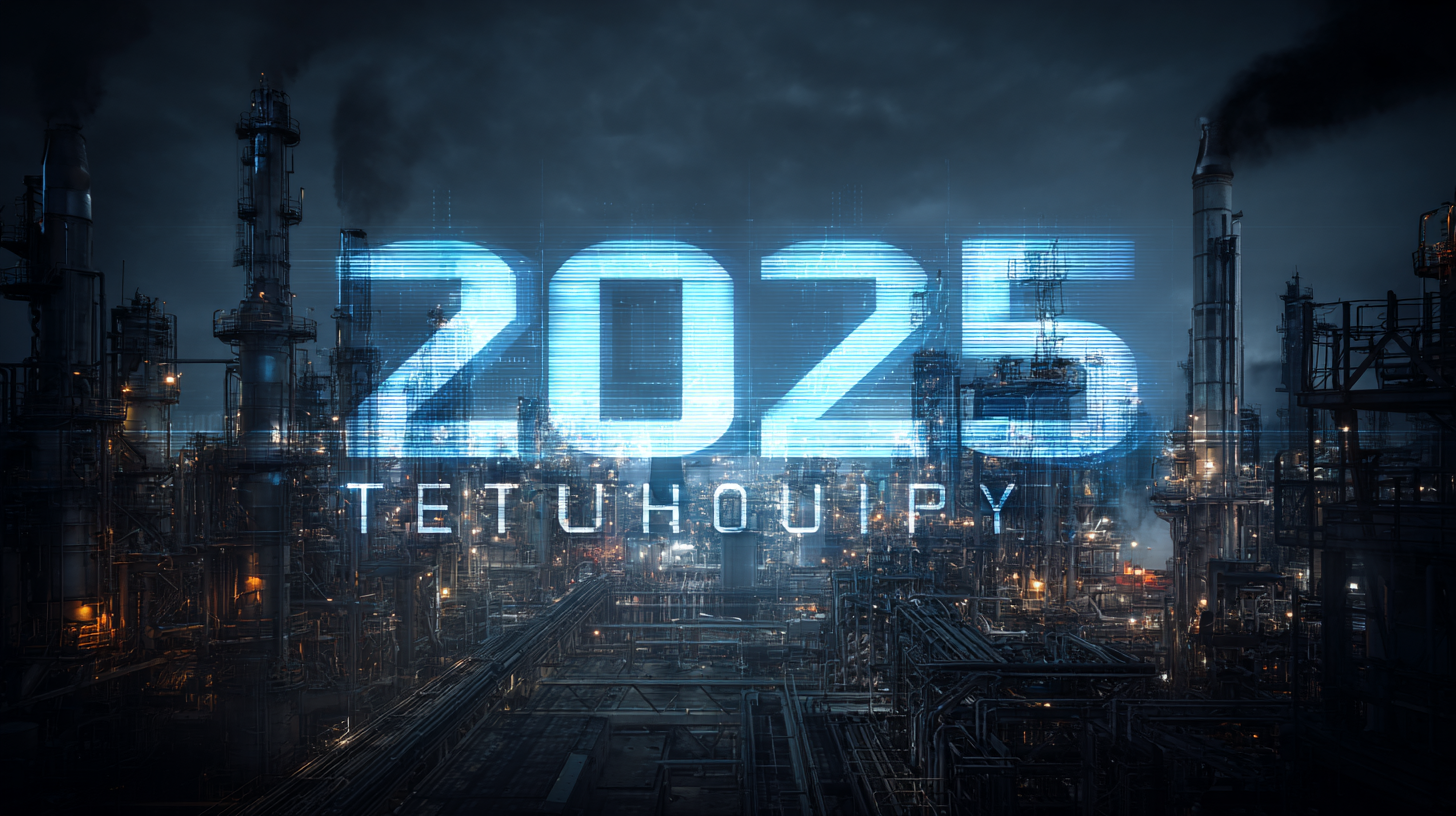
How the Best Manufacturers Will Adapt to 2025 Technology Trends for Competitive Advantage
As we approach 2025, the manufacturing landscape is poised for unprecedented transformation driven by technological advancements. According to a report by McKinsey, nearly 70% of manufacturers are planning to increase their investments in digital technologies to enhance productivity and resilience. Additionally, the World Economic Forum indicates that smart manufacturing could add up to $2.3 trillion to global GDP by 2030. To maintain a competitive edge, manufacturers must adapt swiftly to these emerging trends, such as automation, artificial intelligence, and IoT integration. This blog will explore the key strategies that manufacturers can employ to leverage these technologies effectively, ensuring they not only survive but thrive in an increasingly digitalized market.

Adapting to Industry 4.0: Embracing Automation Trends for Manufacturing Leaders
In the rapidly evolving landscape of manufacturing, leaders must adeptly embrace Industry 4.0 technologies to secure a competitive edge. Automation trends are at the forefront of this transformation, with a recent report from the McKinsey Global Institute projecting that automation could raise global productivity by as much as 1.4 to 1.8 percent annually. This shift towards automation is not merely a matter of efficiency; it fundamentally alters how manufacturers operate, enabling them to respond swiftly to market demands and customer preferences.
Moreover, implementing advanced automation solutions, such as robotics and the Internet of Things (IoT), can lead to substantial reductions in operational costs. According to a study by PwC, 72% of manufacturing executives believe that integrating digital technologies will bolster their competitive advantage by enhancing process efficiencies and enabling real-time decision-making. As businesses gear up for the future, those who proactively invest in these automation technologies and foster a culture of innovation will not only adapt to the challenges of 2025 but also thrive in the new manufacturing landscape.
How the Best Manufacturers Will Adapt to 2025 Technology Trends for Competitive Advantage
| Technology Trend | Implementation Status | Expected Impact (%) | Challenges Faced |
|---|---|---|---|
| Artificial Intelligence | Ongoing | 30 | Data Quality, Skill Gap |
| Internet of Things (IoT) | Planning | 25 | Connectivity Issues |
| Robotics | Completed | 40 | High Initial Costs |
| Cloud Computing | Adopted | 35 | Security Concerns |
| Big Data Analytics | Ongoing | 20 | Data Integration |
| Additive Manufacturing | Trial | 15 | Material Limitations |
Leveraging AI and Machine Learning for Enhanced Supply Chain Efficiency
As we approach 2025, manufacturers must recognize the transformative potential of AI and machine learning in reshaping supply chain dynamics. With the increasing complexity of global supply chains, traditional management approaches often fall short. By leveraging advanced technologies, manufacturers can enhance visibility, optimize logistics, and predict demand with remarkable accuracy. AI algorithms can analyze vast amounts of data in real time, enabling businesses to make informed decisions that minimize risks and reduce costs.
Moreover, machine learning models can forecast supply chain disruptions before they occur, allowing manufacturers to implement proactive measures. By analyzing historical data alongside current market trends, these models help identify potential bottlenecks or shortages. This not only enhances operational efficiency but also ensures a seamless flow of goods from production to delivery. As a result, companies that adopt AI and machine learning will not only streamline their processes but also gain a significant competitive edge in an ever-evolving marketplace. Embracing these technologies today will empower manufacturers to meet the challenges of tomorrow head-on, ensuring they remain at the forefront of innovation and customer satisfaction.

Sustainable Manufacturing Practices: Meeting 2025 Environmental Standards
As manufacturers look ahead to 2025, the importance of sustainable manufacturing practices cannot be overstated. With environmental standards tightening globally, companies that prioritize sustainability will not only comply with regulations but also enhance their competitive advantage. Implementing eco-friendly processes can lead to reduced waste, lower energy consumption, and a stronger brand reputation in an increasingly eco-conscious marketplace.
One effective tip for manufacturers is to conduct a comprehensive audit of their current practices. Identifying areas where resources are wasted or pollution is generated allows for targeted improvements that can significantly reduce the environmental footprint. Additionally, investing in energy-efficient technologies and machinery can yield long-term savings and align operations with 2025’s sustainability standards.
Collaboration with suppliers who prioritize sustainable practices is another crucial approach. By reassessing the supply chain and opting for partners committed to eco-friendly methods, manufacturers can ensure that their products are made with minimal environmental impact. This not only helps in meeting regulatory demands but also appeals to a growing segment of consumers who value sustainability in their purchasing decisions.
The Role of IoT in Revolutionizing Global Manufacturing Operations
 The advent of the Internet of Things (IoT) is transforming global manufacturing operations in unprecedented ways. IoT technology enables manufacturers to connect machinery, sensors, and devices, leading to smarter factories that enhance productivity and efficiency. As we approach 2025, leveraging IoT will be essential for manufacturers looking to maintain a competitive edge in a rapidly evolving market.
The advent of the Internet of Things (IoT) is transforming global manufacturing operations in unprecedented ways. IoT technology enables manufacturers to connect machinery, sensors, and devices, leading to smarter factories that enhance productivity and efficiency. As we approach 2025, leveraging IoT will be essential for manufacturers looking to maintain a competitive edge in a rapidly evolving market.
One key benefit of IoT integration is real-time data collection. By equipping machines with sensors, manufacturers can monitor performance and identify potential issues before they turn into costly downtime. For manufacturers, implementing an IoT-driven maintenance schedule can significantly reduce maintenance costs and improve overall equipment effectiveness.
Another advantageous application of IoT in manufacturing is supply chain optimization. Smart devices can track inventory levels instantaneously, ensuring that manufacturers have the right materials on hand while minimizing excess stock. To make the most of this capability, manufacturers should invest in IoT solutions that offer comprehensive analytics, allowing them to forecast demand accurately and respond to market changes promptly. Embracing IoT is not just about technology; it’s about creating a culture of innovation that allows manufacturers to thrive in the face of future challenges.
Data-Driven Decision Making: Harnessing Analytics for Competitive Advantage
In the rapidly evolving manufacturing landscape, data-driven decision making has emerged as a pivotal strategy that enables companies to harness analytics for a competitive edge. By leveraging vast amounts of operational data, manufacturers can unveil insights that drive productivity, enhance quality, and streamline processes. This shift towards analytics not only helps in understanding current performance but also forecasts future trends, allowing companies to stay ahead of the competition.
Manufacturers that effectively adopt data analytics are better positioned to identify inefficiencies and capitalize on opportunities. By implementing predictive maintenance, for instance, they can significantly reduce downtime and enhance equipment lifespan, translating data insights into tangible operational improvements. Moreover, advanced analytics empowers manufacturers to personalize their offerings based on consumer behavior, leading to increased customer satisfaction and loyalty. As 2025 approaches, those who embrace data-driven strategies will not only survive but thrive in an increasingly competitive marketplace.
Data-Driven Decision Making: Harnessing Analytics for Competitive Advantage
This chart represents the projected investment in analytics technologies from 2021 to 2025. As companies adapt to technological trends, the increasing investment reflects a commitment to data-driven decision-making for competitive advantage.
